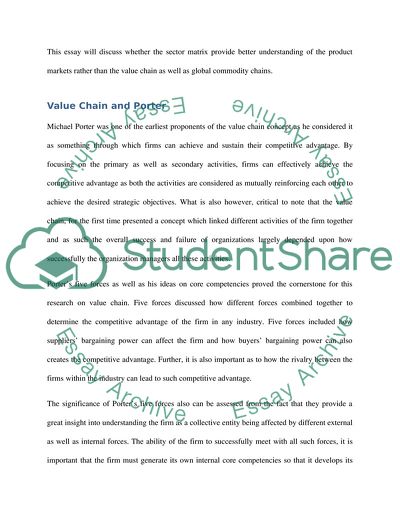Cite this document
(Sector Matrix - a Good Tool to Understand the Strategic Characteristic Essay - 2, n.d.)
Sector Matrix - a Good Tool to Understand the Strategic Characteristic Essay - 2. Retrieved from https://studentshare.org/macro-microeconomics/1553217-using-an-extended-example-critically-examine-whether-the-sector-matrix-framework-gives-a-better-strategic-understanding-of-product-markets-than-the-concepts-of-product-or-commodity-chains
Sector Matrix - a Good Tool to Understand the Strategic Characteristic Essay - 2. Retrieved from https://studentshare.org/macro-microeconomics/1553217-using-an-extended-example-critically-examine-whether-the-sector-matrix-framework-gives-a-better-strategic-understanding-of-product-markets-than-the-concepts-of-product-or-commodity-chains
(Sector Matrix - a Good Tool to Understand the Strategic Characteristic Essay - 2)
Sector Matrix - a Good Tool to Understand the Strategic Characteristic Essay - 2. https://studentshare.org/macro-microeconomics/1553217-using-an-extended-example-critically-examine-whether-the-sector-matrix-framework-gives-a-better-strategic-understanding-of-product-markets-than-the-concepts-of-product-or-commodity-chains.
Sector Matrix - a Good Tool to Understand the Strategic Characteristic Essay - 2. https://studentshare.org/macro-microeconomics/1553217-using-an-extended-example-critically-examine-whether-the-sector-matrix-framework-gives-a-better-strategic-understanding-of-product-markets-than-the-concepts-of-product-or-commodity-chains.
“Sector Matrix - a Good Tool to Understand the Strategic Characteristic Essay - 2”. https://studentshare.org/macro-microeconomics/1553217-using-an-extended-example-critically-examine-whether-the-sector-matrix-framework-gives-a-better-strategic-understanding-of-product-markets-than-the-concepts-of-product-or-commodity-chains.


